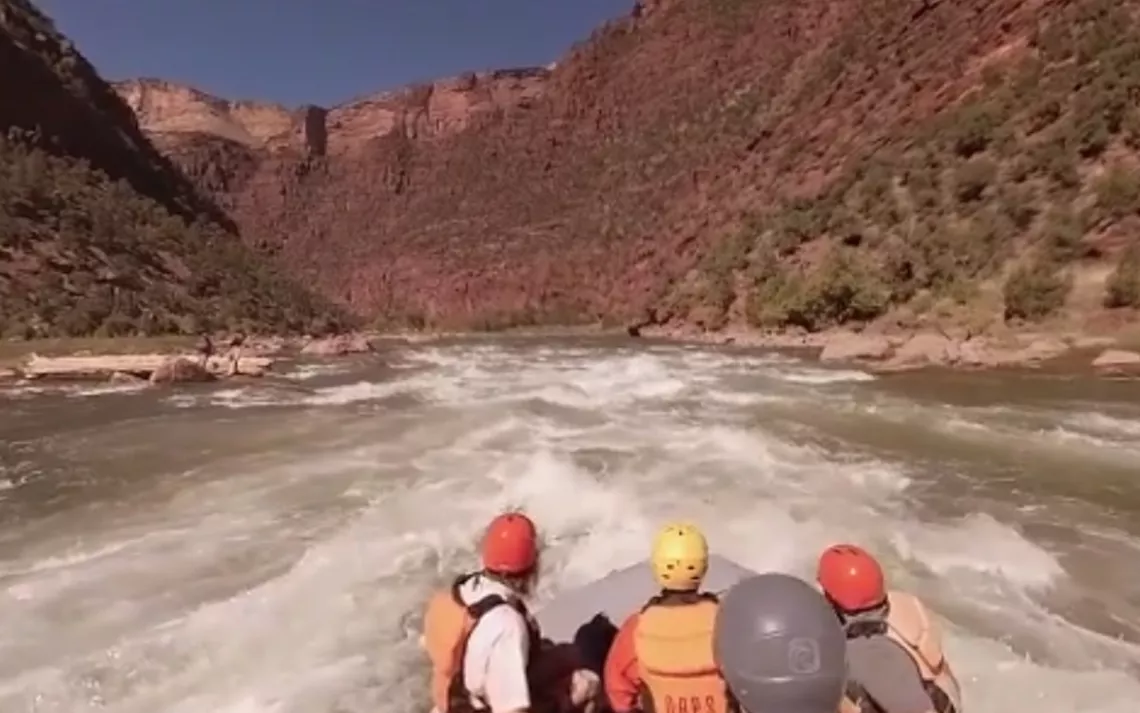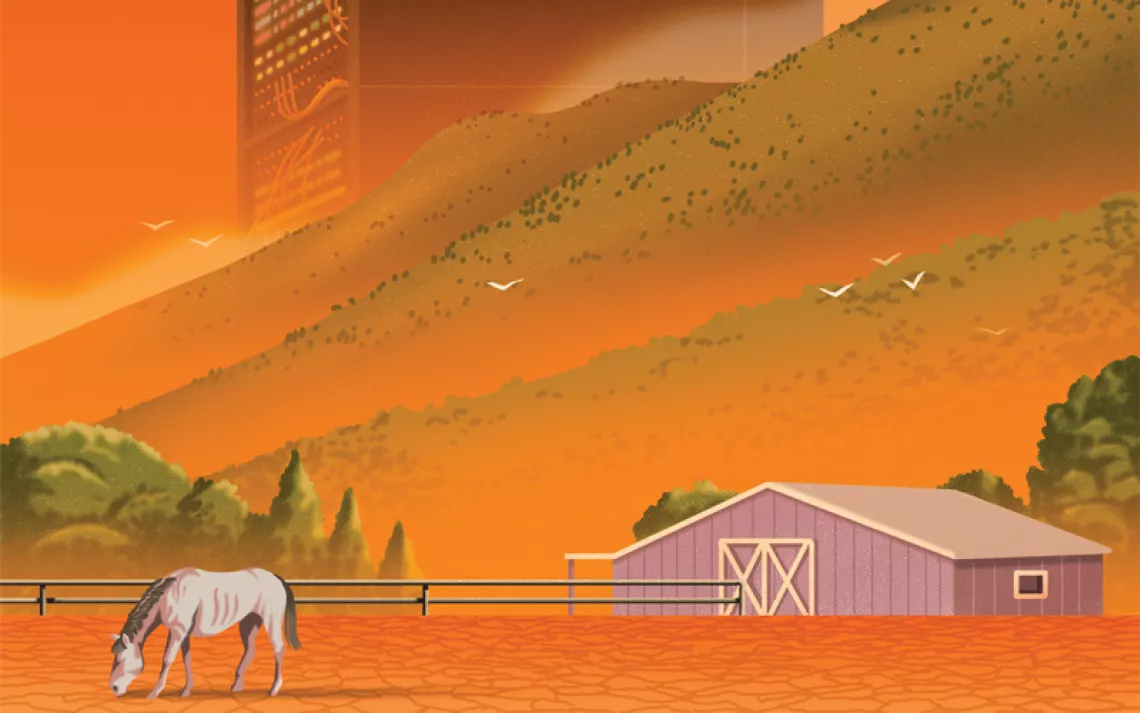Can Virtual Reality Make the Great Outdoors Even Greater?
Probably not. But it can give some people access they wouldn’t otherwise have.

As you’ve probably heard by now, virtual reality technology—or VR—is shaking up industries as disparate as gaming and real estate, filmmaking and journalism, tourism and (no surprise there) pornography. The 360-degree video presentation, which sometimes is also rendered as 3D, has the power to create immersive experiences that seem remarkably real. Now, some media producers and conservation organizations are experimenting with using VR to capture and communicate the experience of outdoor recreation. Imagine: Someday soon you could scuba dive the Great Barrier Reef, canoe through the Everglades, or hike Half Dome in your bathrobe and slippers, from the comfort of your home.
Those who are experimenting with VR as a conservation tool acknowledge that the visceral experience of being outdoors can’t be replicated easily. The intoxicating mountain air, dizzying heights, and sense of adventure of a mountain ascent are one-of-a-kind. “There’s nothing that takes the place of actually being outside,” says Connie Dassinger, a member of the Centennial Group of the Sierra Club’s Georgia Chapter.
But Dassinger and others with the Georgia Chapter still believe that VR can help expand the ranks of outdoors lovers. During a recent outing in Georgia’s Red Top Mountain State Park, Dassinger experienced something for the first time on a hike—a VR video shoot. At first, Dassinger was worried that the filmmaker’s equipment would be intrusive, but that wasn’t the case. “After a while,” she says, “I ignored that the cameras were even there.”
Dassinger’s hike—a six-mile trek that has been made into a three-minute VR video—was filmed by Rob Alvarado, the owner of Virtual Vacation Tours. Since early 2016, Alvarado has been creating and compiling hundreds of interactive 360-degree videos that allow people to demo their vacation destinations before booking any flights or making any reservations. He’d like to do the same thing for the Sierra Club.
“People can view what the trail is like,” Alvarado says, “and bikers can see the trail’s inclines and declines and where there may be gravel and rocks. You can look at the trail ahead of time and be on the trail the next week.”
Alvarado sees an application for VR beyond giving outdoorsy folks a sneak peek of their forthcoming adventure. He thinks 360-degree videos that capture nature in all (or most) of its glory can be used to engage the elderly or those who are mobility-challenged.
Ted Terry, the director of the Sierra Club’s Georgia Chapter and the mastermind behind Alvarado's and Dassinger’s outing, agrees. “We thought making videos like this might be a good way to bring the outdoors to people who wouldn’t be able to experience it firsthand,” Terry says. “People hear ‘virtual outing,’ and they think we’re trying to augment reality. But what we’re actually doing is bringing the outdoors to people who can’t experience the richness of these wild treasures themselves.”
While Terry’s altruistic goals seem unimpeachable, VR for the outdoors still comes with a major red flag: What if high-quality, 360-degree video depictions of nature prompt some people to trade in their hiking boots for VR goggles? If VR becomes a substitute for real-life, could it undermine the conservation ethic?
That’s unlikely, says Tim Kemple, a director and photographer with Camp4Collective, a production company located in Salt Lake City. Kemple has partnered with The North Face, Jaunt VR, and others to create short VR videos about outdoor adventures.
Kemple grew up well before GoPro, camera-equipped drones, and VR were on the scene. As a kid, he loved to watch films that depicted the outdoors. Such films, paired with his joy for skiing and climbing, inspired him to drive cross-country from New Hampshire to the Rocky Mountains. He sees VR as just another way to create high-quality video content. “Some stories are captured best with VR,” Kemple says, “but some are told better in two-dimensional film, as photographs, or as written stories. Incredible content inspires people to get off their asses and experience it for themselves.”
Thomas Hayden, a photographer and panoramic filmmaker, agrees. Hayden works with 360 Labs, a Portland-based production company that specializes in 360-degree immersive content and has teamed up with Google and Columbia Sportswear to create VR videos. “VR places the viewer into an experience,” Hayden says. “It’s an incredible use of technology to inspire people who might never get to see Mount Everest or the Grand Canyon to realize that our natural areas need protecting.”
Hayden and Kemple say that, rather than being a substitute for getting outside, VR can serve as a gateway drug of sorts that will introduce some people to the excitement and rewards of outdoor adventure. If anything, cutting-edge VR might contribute to another long-standing conservation challenge: How to love wild places without loving them to death. The higher-quality the content, the better the technology, and the more remote the footage, the more people will be inspired to take off the VR goggles, step away from their screens, and experience the outdoors for themselves.
“I’m not worried about VR somehow replacing the human experience of being outdoors,” Kemple says. “What worries me is how much technology is driving the use of the outdoors. Tech continues to inspire people to have more adventures, but there are only so many people that the land can handle.”
 The Magazine of The Sierra Club
The Magazine of The Sierra Club



